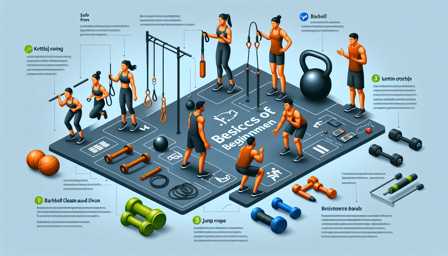
CrossFit and Injury Prevention: Tips and Best Practices
CrossFit, known for its high-intensity, varied functional movements, has grown tremendously in popularity. However, with its rigorous physical demands, injury prevention is a key aspect that practitioners must consider. This article delves into effective strategies and best practices to minimize injury risk while engaging in CrossFit workouts.
Understanding the Risks
Before diving into prevention strategies, it's important to understand the common injury risks associated with CrossFit. These often include:
- Muscle Strains and Sprains: Due to heavy lifting and sudden movements.
- Joint Injuries: Particularly in the knees, shoulders, and wrists.
- Back Injuries: Resulting from improper lifting techniques or overexertion.
Understanding these risks highlights the need for proper technique and safety measures.
Essential Injury Prevention Tips
1. Proper Warm-Up and Cool-Down
A comprehensive warm-up prepares the body for the intense activity ahead, reducing the risk of muscle strains. Cool-down exercises, on the other hand, aid in recovery and flexibility.
2. Correct Technique and Form
One of the most crucial aspects of CrossFit is learning and maintaining proper form. Incorrect technique, especially during weightlifting, can lead to severe injuries. Engaging with a certified CrossFit trainer can ensure that movements are performed correctly.
3. Gradual Progression
Rapidly increasing workout intensity or weight can overwhelm the body, leading to injuries. It's essential to progress gradually, allowing the body to adapt.
4. Adequate Recovery and Rest
Rest days are vital in any training regimen. Overtraining can lead to burnout and injury. Incorporating rest days helps the body recover and repair.
5. Hydration and Nutrition
Proper hydration and nutrition support muscle recovery and overall health, reducing the likelihood of injuries related to fatigue and poor health.
Recommended Products for Injury Prevention
Protective Gear
- Wrist Wraps: Brands like Rogue Fitness offer sturdy wrist wraps that provide essential support during heavy lifts and handstands.
- Knee Sleeves: Rehband knee sleeves are popular for their comfort and support, crucial during squats and lunges.
- Weightlifting Belts: A quality belt, such as those from Harbinger, can help maintain proper posture and reduce the risk of back injuries.
Recovery Tools
- Foam Rollers: TriggerPoint foam rollers are excellent for self-myofascial release, aiding in muscle recovery and flexibility.
- Compression Clothing: Products from companies like 2XU offer compression tights and tops that can improve circulation and recovery.
Quality Footwear
- Investing in proper footwear, such as the Reebok Nano or Nike Metcon series, can provide the necessary support and stability for CrossFit exercises.
Regular Health Check-Ups
Regular check-ups with a healthcare provider, especially for those with pre-existing conditions, can help monitor fitness progress and catch any potential issues early.
Conclusion
Injury prevention in CrossFit is multifaceted, involving proper training techniques, adequate recovery, and the use of appropriate gear. By following these tips and best practices, practitioners can enjoy the benefits of CrossFit while minimizing their risk of injury. Remember, it's always better to be proactive about safety than reactive to injuries.


